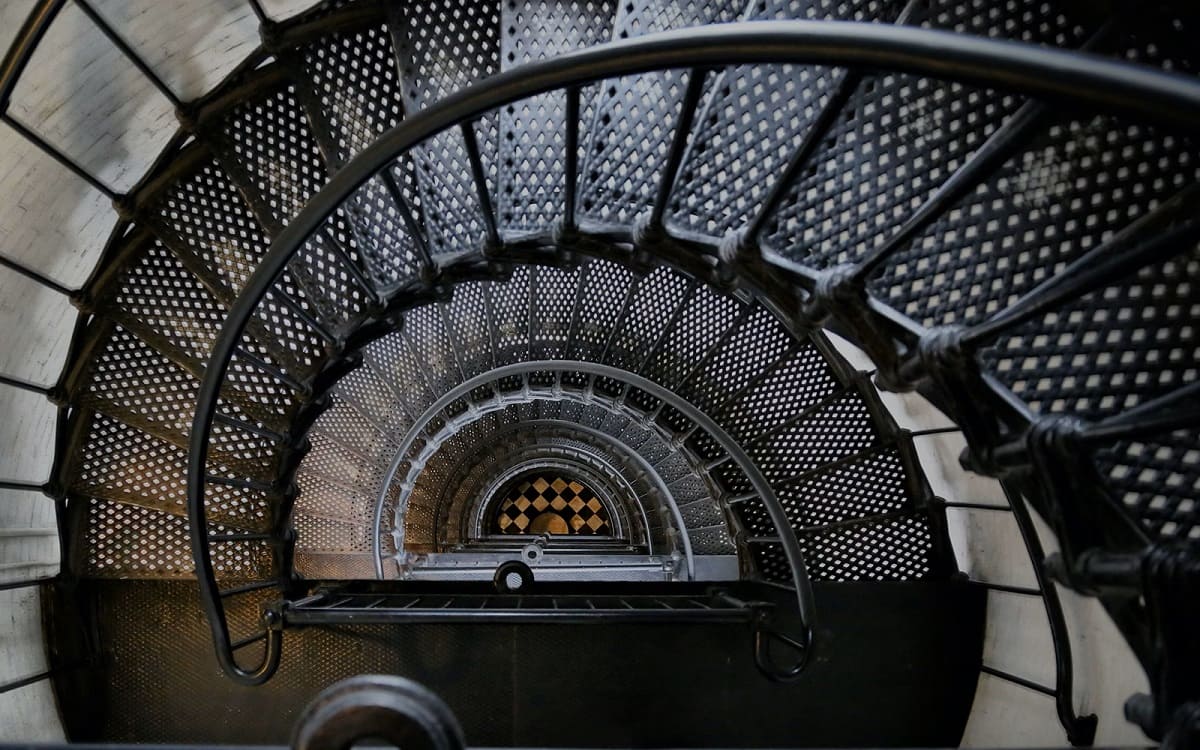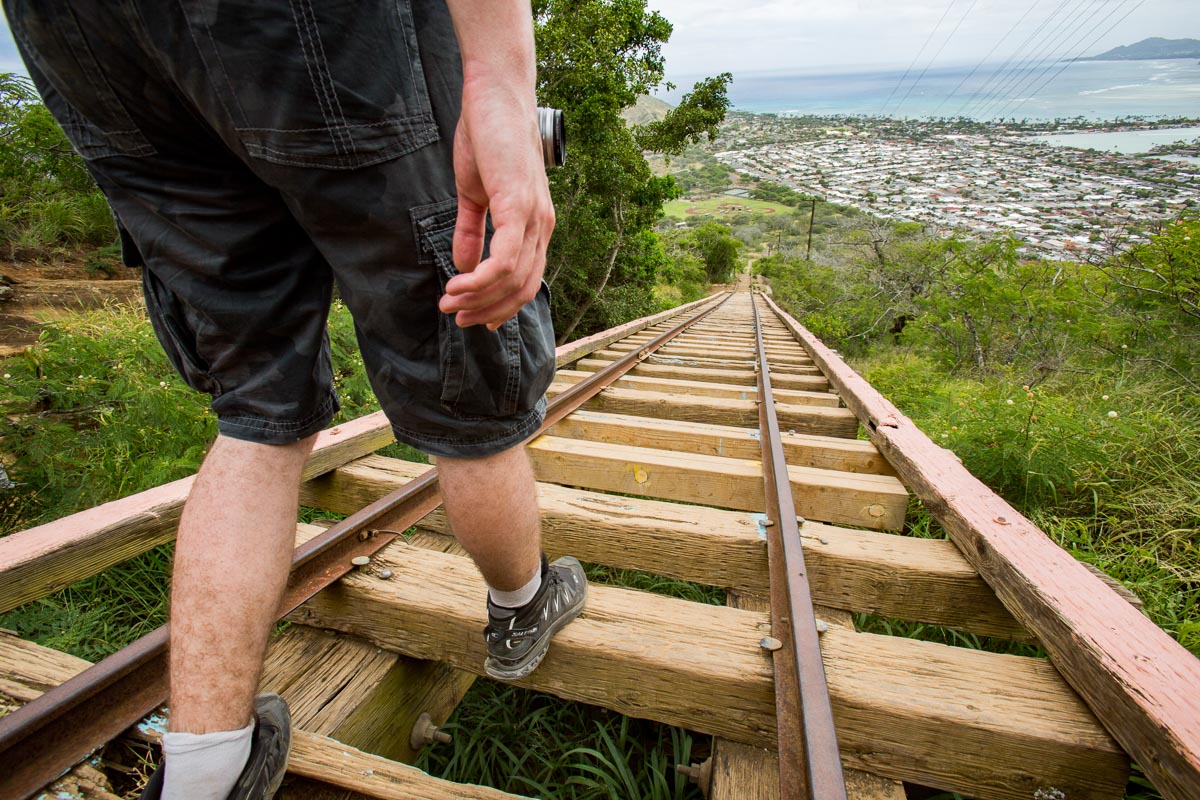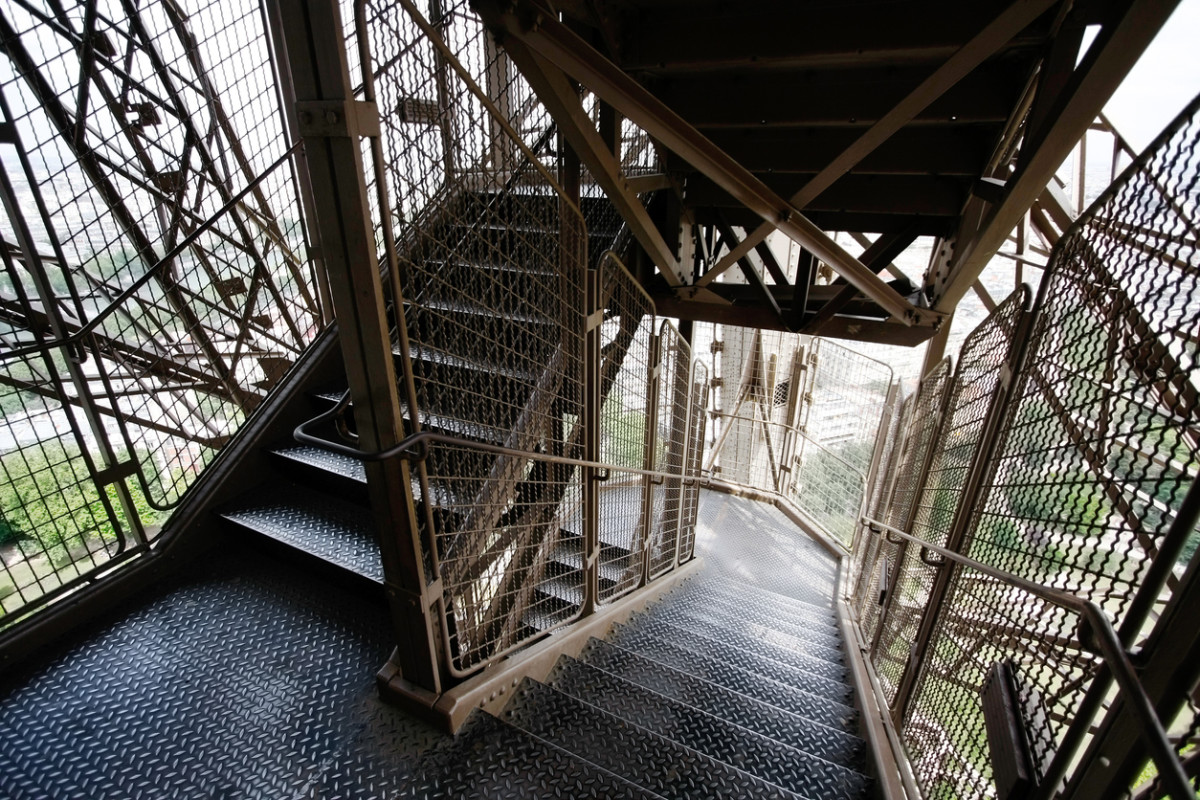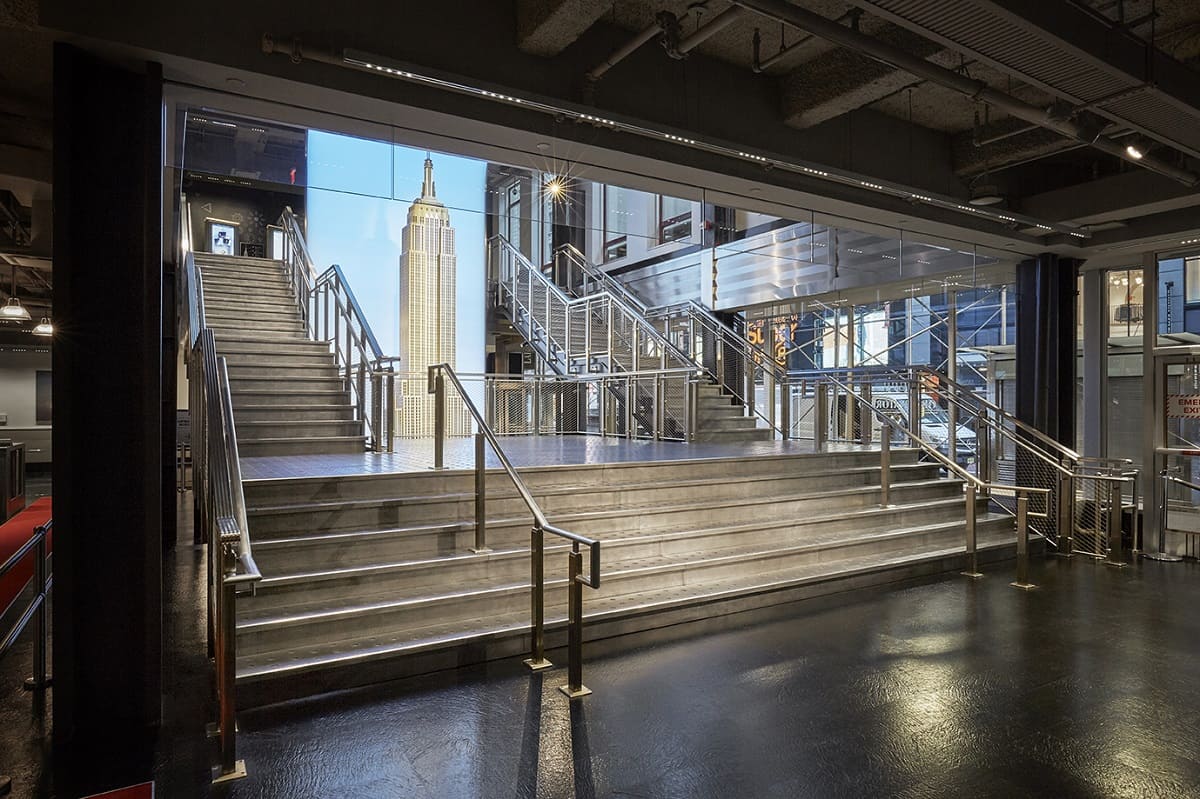

Articles
How Many Stairs In The Statue Of Liberty
Modified: December 7, 2023
Discover the fascinating history and construction of the iconic Statue of Liberty in this insightful article. Learn how many stairs are inside the statue and more.
(Many of the links in this article redirect to a specific reviewed product. Your purchase of these products through affiliate links helps to generate commission for Storables.com, at no extra cost. Learn more)
Introduction
The Statue of Liberty, a symbol of freedom and democracy, has long been an iconic landmark of the United States. Located on Liberty Island in New York Harbor, this colossal statue has attracted millions of visitors from around the world since its dedication in 1886. Standing at an impressive height of 305 feet, the statue has served as a beacon of hope and a welcoming sight for immigrants arriving in America.
The construction of the Statue of Liberty was a joint effort between France and the United States. It was designed by French sculptor Frederic Auguste Bartholdi and constructed by Gustave Eiffel, the mastermind behind the Eiffel Tower in Paris. The statue was a gift from the people of France to the people of the United States as a lasting symbol of friendship and collaboration between the two nations.
Over the years, the Statue of Liberty has become one of the most visited tourist attractions in the United States. Its significance extends beyond its impressive size and striking visual appeal. The statue represents the principles of freedom, liberty, and democracy that the United States was built upon. It continues to serve as a reminder of the importance of these values in modern society.
In this article, we will explore the fascinating history of the Statue of Liberty, its design and construction, its dimensions and structure, and visitor access to this iconic monument. We will also delve into the intriguing question of how many stairs are within the statue and what it takes to climb to its pinnacle. So, let’s embark on a journey to uncover the secrets and marvels of the Statue of Liberty!
Key Takeaways:
- The Statue of Liberty boasts 354 steps to the crown and 215 steps to the pedestal, offering visitors a unique and physically rewarding experience while providing breathtaking views of New York Harbor.
- A symbol of freedom and democracy, the Statue of Liberty stands as a testament to human ingenuity and the enduring values of liberty, inspiring visitors to connect with history and appreciate its grandeur.
Historical Background
The idea for the Statue of Liberty was first conceived by French politician and abolitionist Edouard de Laboulaye. In 1865, after the American Civil War and the abolition of slavery, Laboulaye proposed the idea of presenting a monument to the United States as a symbol of Franco-American friendship and as a celebration of liberty and democracy.
To bring this idea to life, Laboulaye sought the talent of French sculptor Frederic Auguste Bartholdi. Together, they developed the concept of a colossal statue that would stand at the entrance of New York Harbor, welcoming ships and immigrants arriving from around the world. The statue was meant to embody the ideals of freedom and liberty that the United States symbolized.
Bartholdi worked diligently on the design of the statue, drawing inspiration from ancient Roman goddesses and creating a colossal neoclassical figure of a female holding a torch in her right hand and a tablet inscribed with the date of America’s independence in her left. The figure would wear a crown with seven rays, symbolizing the seven continents.
To fund the construction of the statue, both the French and American governments launched fundraising campaigns. In France, donations were collected through public events, while in the United States, the American Committee for the Statue of Liberty organized various events and initiatives to raise funds. The efforts were successful, and with the support of both nations, the construction of the Statue of Liberty began.
The statue was constructed in France and shipped across the Atlantic Ocean in pieces. Its assembly on Bedloe’s Island (now known as Liberty Island) took several months, and on October 28, 1886, the statue was officially unveiled in a grand ceremony attended by dignitaries and thousands of spectators.
Since its unveiling, the Statue of Liberty has become a symbol of hope and freedom for people all over the world. It has witnessed significant historical events, such as the waves of immigrants who passed by it in search of a better life, and the celebrations that marked important milestones in American history.
Today, the Statue of Liberty is not only a cherished national monument but also a UNESCO World Heritage site. It stands as a testament to the enduring values of liberty, democracy, and friendship between nations.
Design and Construction
The design and construction of the Statue of Liberty involved the collaborative efforts of several talented individuals. French sculptor Frederic Auguste Bartholdi was responsible for the statue’s design, while French engineer Gustave Eiffel oversaw the construction of its internal framework.
Bartholdi drew inspiration from various sources for the design of the statue. He aimed to create a colossal figure that would embody the ideals of liberty and freedom. The statue depicts a female figure dressed in flowing robes, with her right arm raised holding a torch and her left arm carrying a tablet. The torch symbolizes enlightenment, while the tablet is engraved with the date of America’s independence, July 4, 1776.
To create the statue, Bartholdi first crafted a small-scale model, which was then used to construct a larger plaster prototype. From this prototype, craftsmen in Paris carefully sculpted sheets of copper, which were then pieced together to form the final statue. The copper sheets were shaped and hammered to create the desired contours and details of the statue’s face, body, and clothing.
The internal structure of the Statue of Liberty was designed by Gustave Eiffel, famous for his work on the Eiffel Tower. Eiffel’s design included an iron framework that provided stability and support for the statue. This internal framework consisted of a series of metal beams and supports that connected to the copper skin of the statue, ensuring its strength and durability.
Once the construction of the statue was complete, it was disassembled into hundreds of individual pieces and shipped to New York. The statue arrived in the United States in June 1885 in over 200 crates. It took several months to reassemble and erect the statue on Bedloe’s Island, which had been selected as the site for its installation.
The final touch was the application of a green patina to the statue’s copper surface. Over time, the copper naturally oxidized, creating the iconic green color that we see today. This process was intentional and added to the statue’s visual appeal.
The construction of the Statue of Liberty was a significant engineering and artistic feat. It required meticulous planning, skilled craftsmanship, and collaboration between talented individuals. The result is a magnificent monument that stands as a testament to human ingenuity, artistic vision, and the ideals of freedom and democracy.
Dimensions and Structure
The Statue of Liberty stands tall and imposing, with impressive dimensions that make it one of the largest statues in the world. From its base to the tip of its torch, the Statue of Liberty measures approximately 305 feet in height. This height includes both the pedestal and the statue itself.
The statue itself, from the top of the head to the heel of the foot, measures about 151 feet and 1 inch. It is made entirely of copper sheets that are just 3/32 of an inch thick. The copper skin is supported by an iron framework designed by Gustave Eiffel, which provides structural stability to the statue.
The statue’s face is particularly striking, with expressive features that exude a sense of strength and determination. The head measures about 17 feet and 3 inches from the crown to the chin, and the eyes each measure about 2 feet in width.
The Statue of Liberty also holds a symbolic torch in her right hand. The height of the torch is about 29 feet and 7 inches, and it has been coated with gold leaf to enhance its visibility during the day and night.
The statue’s base, known as the pedestal, adds to its overall height. The pedestal stands at approximately 154 feet, bringing the total height of the statue and pedestal combined to 305 feet.
The internal structure of the statue, designed by Gustave Eiffel, is a feat of engineering. The iron framework provides support to the copper skin and helps distribute the statue’s weight evenly. This framework includes trusses, beams, and brackets that are skillfully connected to form a stable and robust structure.
To withstand the forces of wind and other natural elements, the statue is designed to sway slightly in strong winds. This flexibility helps prevent damage to the statue and its internal structure.
Overall, the Statue of Liberty is a remarkable feat of engineering and artistic prowess. Its impressive dimensions and robust structure have allowed it to withstand the test of time and stand as a symbol of freedom and hope for generations to come.
The Statue of Liberty has 354 steps from the pedestal to the crown. If you plan to visit, be prepared for a climb and check for any restrictions or closures before your visit.
Visitor Access
Visiting the Statue of Liberty is a popular attraction for tourists from around the world. To ensure a safe and enjoyable experience, there are certain guidelines and procedures in place for visitor access.
To reach the Statue of Liberty, visitors must take a ferry from either Battery Park in Lower Manhattan or Liberty State Park in New Jersey. These ferries are operated by authorized concessionaires and provide transportation to Liberty Island, where the statue is located.
Tickets for the ferry can be purchased in advance or on the day of the visit, although it is recommended to book in advance to secure a spot, especially during peak seasons. Visitors have the option to choose between visiting just the statue on Liberty Island or also including a visit to the adjacent Ellis Island Immigration Museum.
Once on Liberty Island, visitors have the opportunity to explore the grounds, visit the Statue of Liberty Museum, and take in breathtaking views of the surrounding area. The museum offers a wealth of information about the history and significance of the statue, as well as interactive exhibits and artifacts.
For those interested in getting an up-close view of the statue, there is the option to climb to the statue’s pedestal or even go all the way to the crown. However, it’s important to note that access to the crown is limited and requires a separate reservation due to its popularity and limited capacity.
To ensure visitor safety, there are security screenings in place before boarding the ferry and upon arrival on Liberty Island. This may include bag checks and metal detectors, so it’s advisable to check the specific guidelines and restrictions beforehand to avoid any inconveniences.
Visitors should also be prepared for moderate walking and standing during their visit, as there are no vehicles allowed on Liberty Island. Comfortable shoes and weather-appropriate clothing are recommended, as the weather conditions can vary throughout the day.
It’s worth mentioning that visiting the Statue of Liberty can be a crowded experience, especially during peak tourist seasons. To make the most of the visit, it is advisable to plan ahead, arrive early, and consider visiting on weekdays or during less busy times.
Overall, visiting the iconic Statue of Liberty is a memorable experience that offers insight into the history and values of the United States. It provides an opportunity to appreciate the significance of this symbol of liberty and democracy, while enjoying the picturesque surroundings and stunning views of the New York City skyline.
Climbing the Statue
Climbing the Statue of Liberty is an exhilarating and rewarding experience for those who seek a closer look at this magnificent monument. While access to the crown is limited, visitors still have the opportunity to climb to the pedestal, providing a unique perspective of the statue and its surroundings.
To access the pedestal, visitors must climb 215 steps from the statue’s base to the observation deck. The stairwell is narrow and winding, making the climb a bit challenging, but the effort is well worth it for the breathtaking views that await.
As visitors ascend the stairs, they can catch glimpses of the statue’s inner structure, allowing them to appreciate the engineering marvel that supports the copper exterior. Each step brings them closer to the observation deck, where they can pause to admire the stunning panorama of New York Harbor and the Manhattan skyline.
It’s important to note that climbing to the pedestal requires a separate ticket and reservation, as the number of visitors permitted at a time is limited. These tickets can be reserved in advance, and it is recommended to do so to secure a spot, especially during peak tourist seasons.
For those who are lucky enough to secure a reservation, the climb to the pedestal is a memorable experience. The height and grandeur of the statue become even more apparent from this vantage point, allowing visitors to fully appreciate its size and intricacy.
From the pedestal, visitors can also enjoy views of Ellis Island, where millions of immigrants arrived in the United States in search of a better life. The significance of this historic location adds depth to the experience and serves as a reminder of the nation’s rich heritage of diversity and inclusion.
While access to the crown is currently more restricted, it offers a truly unique and intimate encounter with the statue. Climbing to the crown involves an additional 162 steps from the pedestal. Visitors must make a separate reservation well in advance to gain access to this exclusive area.
Reaching the crown offers a rare opportunity to stand at the highest point of the statue and witness a panoramic view that extends far beyond the observation deck. It allows visitors to see the intricate details of the statue up close and offers a sense of accomplishment and connection to this iconic symbol of freedom.
It’s important to be aware that climbing the statue requires a certain level of physical fitness and agility. The stairwell is narrow and steep, and there are limited facilities available along the way. It’s recommended to wear comfortable clothing and appropriate footwear for the climb, and to be prepared for the physical exertion involved.
Climbing the Statue of Liberty is an experience that allows visitors to appreciate the statue’s grandeur and symbolism from a unique perspective. Whether ascending to the pedestal or reaching the coveted crown, it offers an unforgettable journey that brings history and artistry to life.
How Many Stairs Are There?
If you’ve ever wondered just how many stairs are within the Statue of Liberty, you’re not alone. Climbing to the top of this iconic monument requires a decent amount of steps, and it’s a fact that often sparks curiosity among visitors.
To clarify, there are two sets of stairs within the Statue of Liberty: one set leads to the statue’s pedestal, and the other set leads from the pedestal to the crown. The total number of stairs to reach the crown is 354 steps, while reaching the pedestal requires climbing 215 steps.
Ascending to the crown of the statue involves a challenging climb. The narrow and winding staircase, with a total of 162 steps, goes from the top of the pedestal up to the crown. It’s important to note that access to the crown is limited and requires a separate reservation due to its popularity and limited capacity.
For visitors who prefer to reach the pedestal, there are 215 steps to climb. These stairs take you from the statue’s base to an observation deck on the pedestal. From there, you can admire the impressive views of the surrounding area and appreciate the statue from a closer perspective.
It’s worth mentioning that ascending the stairs within the statue can be physically demanding. The narrow passageways and steep steps require a certain level of fitness and agility. Visitors should take their time, go at their own pace, and consider their physical limitations before attempting the climb.
It’s also important to note that while climbing the stairs is an option for those interested, there are elevators available for visitors who may have difficulty with stairs or require accessibility accommodations. These elevators provide a convenient alternative to reach the pedestal or lower levels of the statue.
As with any physical activity, it’s always a good idea to be prepared. Wearing comfortable shoes, bringing water, and taking breaks as needed can help ensure a more enjoyable climb.
Whether you choose to ascend to the crown or reach the pedestal, climbing the stairs within the Statue of Liberty offers a unique and memorable experience. It allows visitors to appreciate the statue’s grandeur up close, marvel at its architectural details, and enjoy stunning views of New York Harbor.
Conclusion
The Statue of Liberty stands as an enduring symbol of freedom, hope, and democracy. From its inception as a gift from France to the United States, to its status as one of the most visited tourist attractions in the country, the statue holds a special place in the hearts of people from around the world.
Throughout this article, we have delved into the historical background, design, dimensions, visitor access, and the intriguing question of how many stairs are within the statue. We have discovered the collaborative efforts of talented individuals, such as Frederic Auguste Bartholdi and Gustave Eiffel, who brought this monumental masterpiece to life.
We have explored the significance of the statue, its representation of liberty and friendship between nations, and its role as a welcoming beacon to immigrants arriving in the United States. It serves as a constant reminder of the values that America was built upon and the ideals that continue to shape its identity.
Visiting the Statue of Liberty allows us to experience its grandeur firsthand, to climb the stairs and stand in awe of its remarkable design and craftsmanship. The opportunity to gaze upon the surrounding scenery, take in the panoramic views of New York Harbor, and appreciate the city’s skyline is a truly memorable experience.
Whether climbing to the pedestal or reaching the crown, the Statue of Liberty offers visitors a chance to connect with history, to witness the intricate details of this colossal statue up close, and to reflect on the enduring values it represents.
As we conclude this exploration of the Statue of Liberty, let us remember the significance of this iconic monument. It stands not only as a physical structure but as a symbol of hope, freedom, and the enduring human spirit.
So next time you see a picture of the Statue of Liberty or hear its name mentioned in conversation, remember the stories and history that have shaped it. And if you ever have the opportunity to stand in its presence, take a moment to appreciate all that it represents and the values it stands for.
The Statue of Liberty will continue to inspire generations to come, serving as a constant reminder of the importance of liberty, democracy, and the pursuit of a more inclusive and compassionate world.
Frequently Asked Questions about How Many Stairs In The Statue Of Liberty
Was this page helpful?
At Storables.com, we guarantee accurate and reliable information. Our content, validated by Expert Board Contributors, is crafted following stringent Editorial Policies. We're committed to providing you with well-researched, expert-backed insights for all your informational needs.















0 thoughts on “How Many Stairs In The Statue Of Liberty”